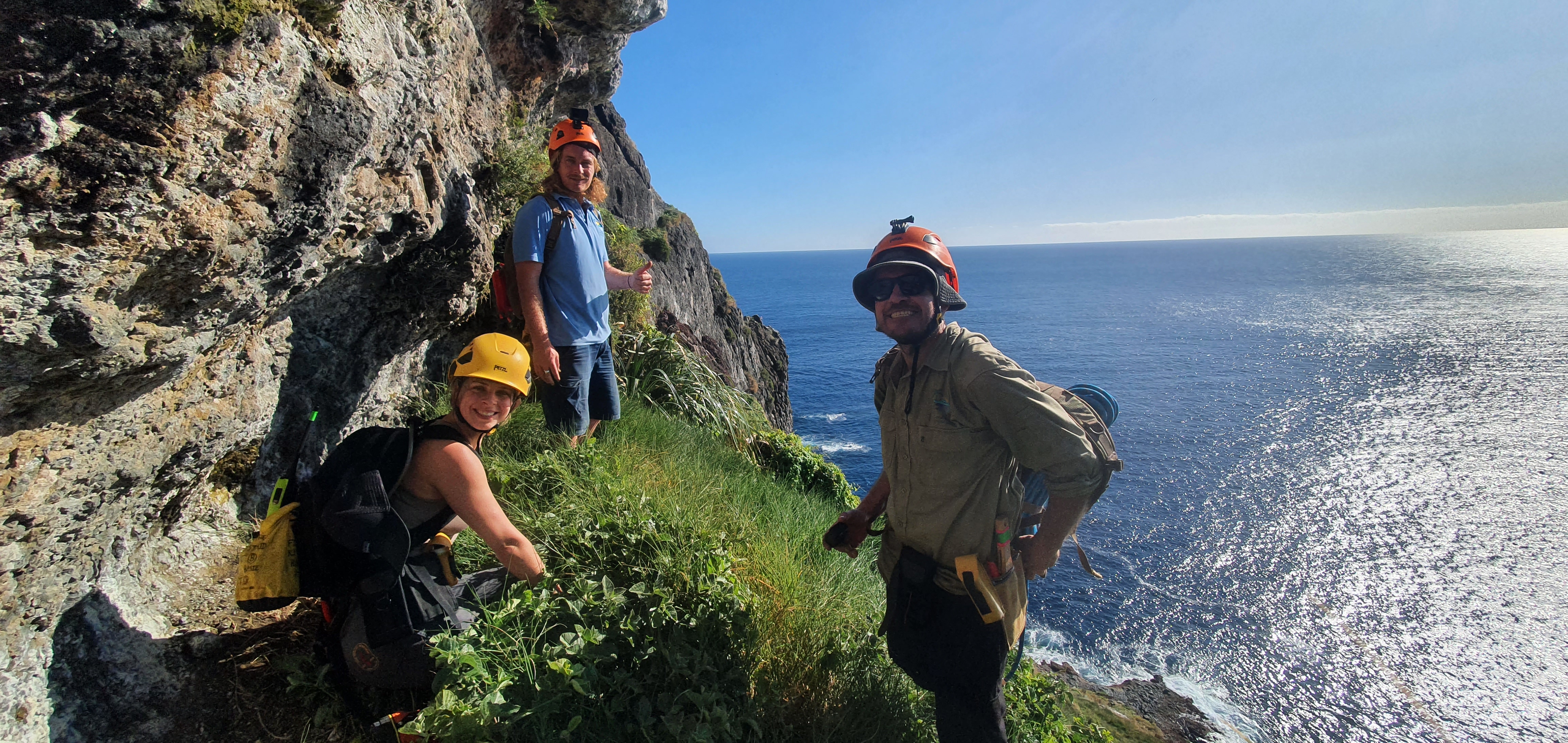Lord Howe’s native flora and fauna receives a lifeline through project funding
A significant grant has been awarded to LHIB to help secure the future of the LHI Little Mountain Palm (Lepidorrhachis mooreana or LMP) and Phasmid through a two-year conservation program.
The project funding was received from the Australian Government Saving Native Species Program, which aims to conserve, protect, and sustainably manage Australia’s biodiversity, ecosystems and environment.
Reviving the critically endangered LMP
Collaborating with scientists to leverage expertise and resources, the LHIB Environment and Community Services team will work to preserve the habitat of the critically endangered LMP and enhance population vitality.
Work from March 2024-November 2025 will include weed control to reduce competition and allow the LMP to thrive, habitat protection, monitoring and management of climate impacts, and a review of threats, population, and disease dynamics.
The LMP an endemic, monotypic palm found nowhere else in the world than on the summit of Mt Gower and Mt Lidgbird. It's current natural habitat now covers less than 4 square kms. The palm has been previously impacted by predation by rodents, and continues to be threatened by invasive weeds.
Back from the brink: Saving the critically endangered Phasmid
With the latest population survey in 2017 finding only 17 live Phasmids in the wild, this project is aimed at mitigating the risk of extinction and setting the world’s rarest insect on a path to recovery.
From June 2024 – November 2025, LHIB will undertake habit protection on Ball’s Pyramid. This will involve weed management on Ball’s Pyramid two - three times over the 1.5 years to control at least 75% of accessible Coast Morning Glory. This invasive weed poses a significant threat to the Phasmid’s only food source, Melaleuca howeana.
Improvements in the management and quality of the captive populations will be another focus of the project. A strong captive population acts as an insurance policy against extinction and provides a source population for potential reintroduction.
Actions from these projects form part of the implementation of the Threatened Species Actions Plan 2022-2032, a pathway to protect, manage and restore Australia’s threatened species and important natural places.

